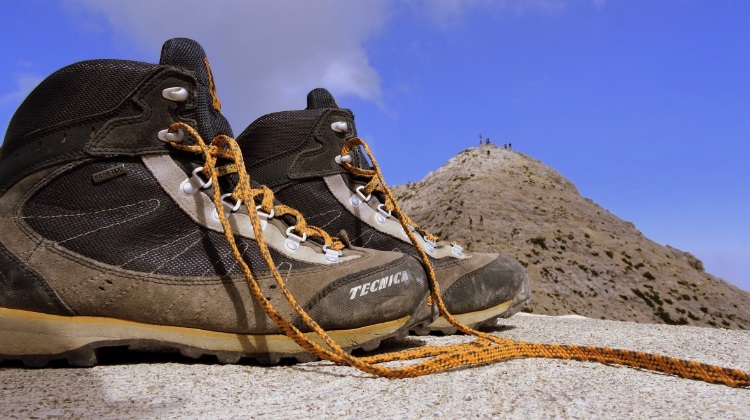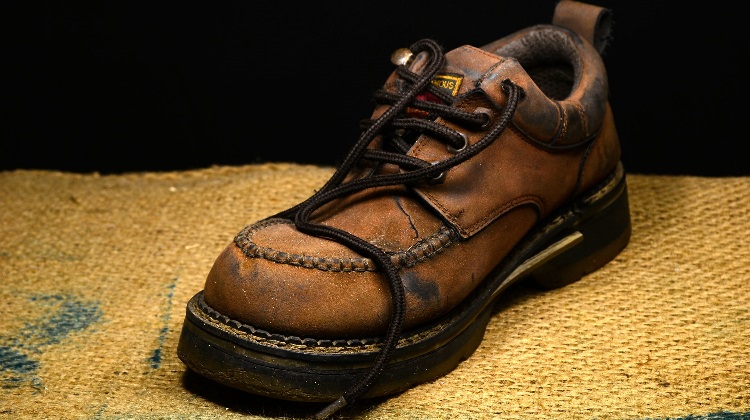Gear
How to Choose the Best Hiking Boots
Hiking through woods, enjoying the nature, as well as the peace and quiet can be one of the most exhilarating experiences one can enjoy.

However, this wonderful experience can turn sour if you have the wrong boots on. It is essential to have the right protection and padding while you stomp through the wilderness. There is a wide range of hiking boots to choose from which can make picking out the right hiking boots rather overwhelming. From style to size, there is plenty to choose from. Here is a guide to help you narrow down your choices and select the best hiking boots for your adventures:
Pick a Style

Hiking boots come in different styles which are for specific kind trekking. Do you want boots for causal hiking or for rigorous hiking deep in the mountains? It is essential to know the difference between the styles of boots to make the right choice. Here are the three main styles you can select from depending on your needs:
Light Hiking Boots – this is a sturdier version of running shoes. These boots are typically referred as hiking shoes. These are ideal for day hiking. However, many long distance hikers also wear these because of their ultra light fit.
Mountaineering Boots – these are ideal for hiking in rocky territory, snowy paths or glacial trails. These boats are designed to easily handle a heavy load and can withstand the toughest terrains.
Backpacking Boots – these are ideal for various terrains, both off and on the trail. If you are planning to go on a multi-day hiking adventure, these are perfect for you. These boots have durability and a stiff sole which helps in fighting against any tough conditions.
Focus on the Material

Material is of utmost importance for hiking boots. The right material means ultimate comfort throughout your hiking expenditure but the wrong material means you feet will be cramped, uncomfortable and hot. Here are three materials you can choose from:
Synthetics – the fabrics in this category are normally polyester and nylon. These are light, easy to break in and can dry quickly. However, these are less water resistant.
Split-Grain Leather – these boots are usually made of half synthetics and half leather and is a rather breathable material. Durability and the water resistance ability of this material are lower as compared to full grain leather.
Full-Grain Leather – majority of the mountaineering boots are made from this material. This material is the most durable and is ideal for hikers going on unsteady terrains. However, keep in mind that this material is heavy and less breathable as compared to the other two.
Get the Right Cut

Hiking boots are also available in various cuts. Picking the right cut is crucial and must be tailored as per the type of trekking you are going for. A wrong cut can result in rocks in the shoes of a rolled ankle. Here are the three cuts that you can choose from:
Low-Cut – these are almost the same as running shows. These are ideal for casual and lightweight hiking; it can also leave you vulnerable for ankle cuts and bruises. Low cut boots are perfect for well maintained trails.
Mid-Cut – this cut provides better balance and ankle support. These also protect you from debris throughout the trial.
High-Cut – this cut offers optimal ankle support and balance, making them perfect for adventurous hikers. These are ideal for hiking on off and on trials, as well as dangerous and unsteady terrains.
Check the Size

It can get easy to get distracted with the variety of boots available and neglect the size completely. It is important that you give each hiking boots you try on a size test to make sure they fit your perfectly. Make sure you have plenty of room to wiggle your toes. The boot should snuggly fit around the ball of your feet and your heel should stay in place. A floating heel means blisters, which of course you would want to avoid.
Whenever you try on hiking boots, make sure you wear trail sock to get the right feel for fit and comfort. You should also ask about insoles, lacing techniques, and socks when you go boot shopping. These elements also contribute towards the overall comfort and fit of your hiking boots.
Go For a Test Run

Always remember to give your newly purchased hiking boots a trial run. Avoid wearing your new boots and directly taking them to the trail. It is essential that you break in your new boots before you go on your hiking adventure. Walk around the house wearing them; go for a quick run around your neighborhood to check if they have the right feel. In case, they don’t feel right, you can return to the store and get them exchanged for another pair of boots.
The right boots can make a major difference in your hiking experience. Follow these steps and you will find the right pair of hiking boots that you would enjoy in numerous hiking adventures to come.
-

 Hunting2 months ago
Hunting2 months agoDrain the Swamp: Corruption Scandal at Washington State’s Fish & Wildlife
-

 Adventure4 weeks ago
Adventure4 weeks agoDoes the “Big Beautiful Bill” Have a Public-Lands Wart?
-

 Adventure1 month ago
Adventure1 month agoHowling in Cuckoo: How Mexican Wolves are Fostered
-

 Gear2 weeks ago
Gear2 weeks agoLet Freedom RING! Primary Arms’ Independence Day Category Sale Starts NOW
-

 Adventure1 week ago
Adventure1 week agoREACTION: Trump’s Make America Beautiful Again Agenda
-

 Adventure3 weeks ago
Adventure3 weeks agoU.S. Bighorn Sheep Going Home to Canada
-

 Adventure1 month ago
Adventure1 month agoYour Dream Hunt Could Be a Movie & Leupold Can Help
